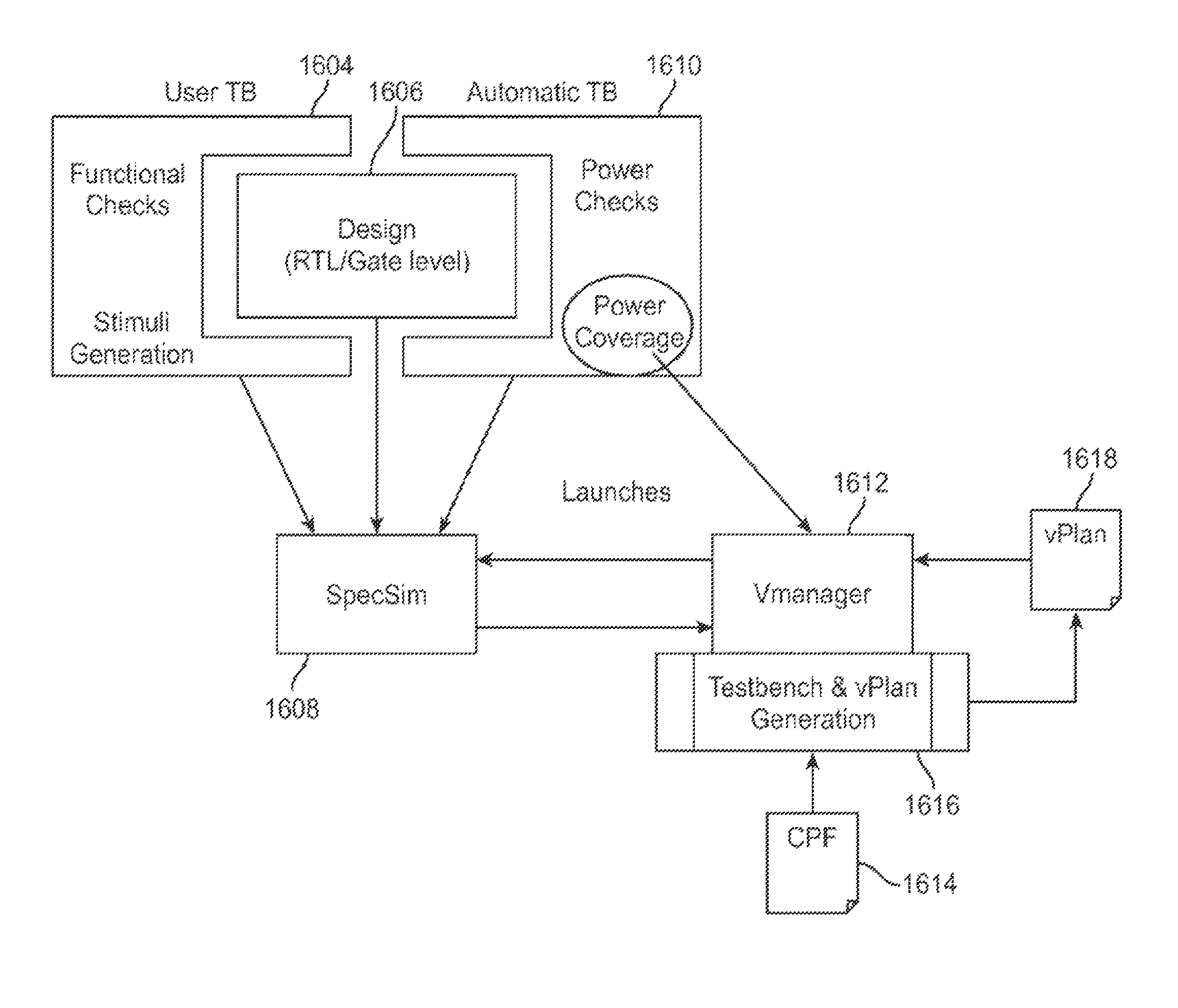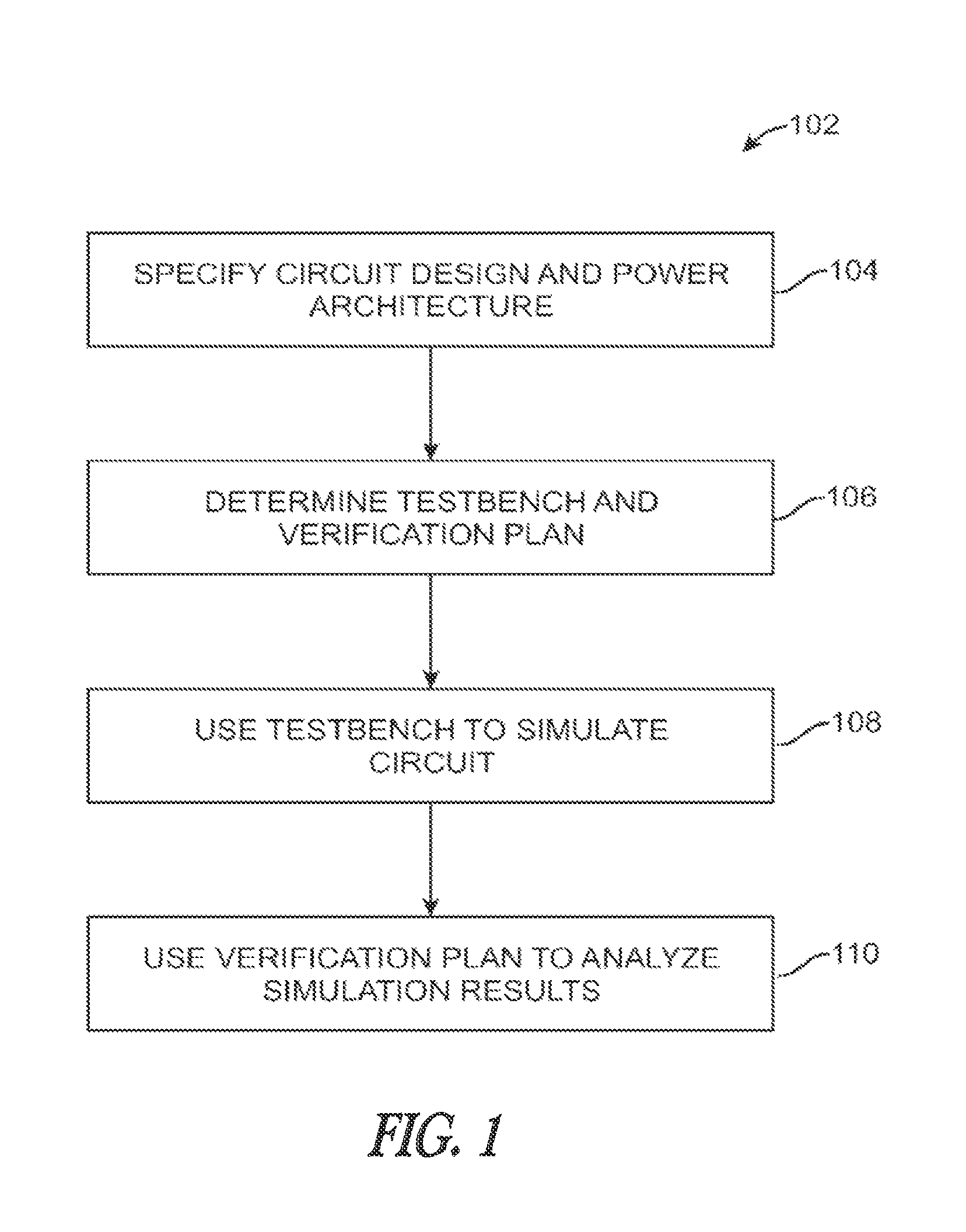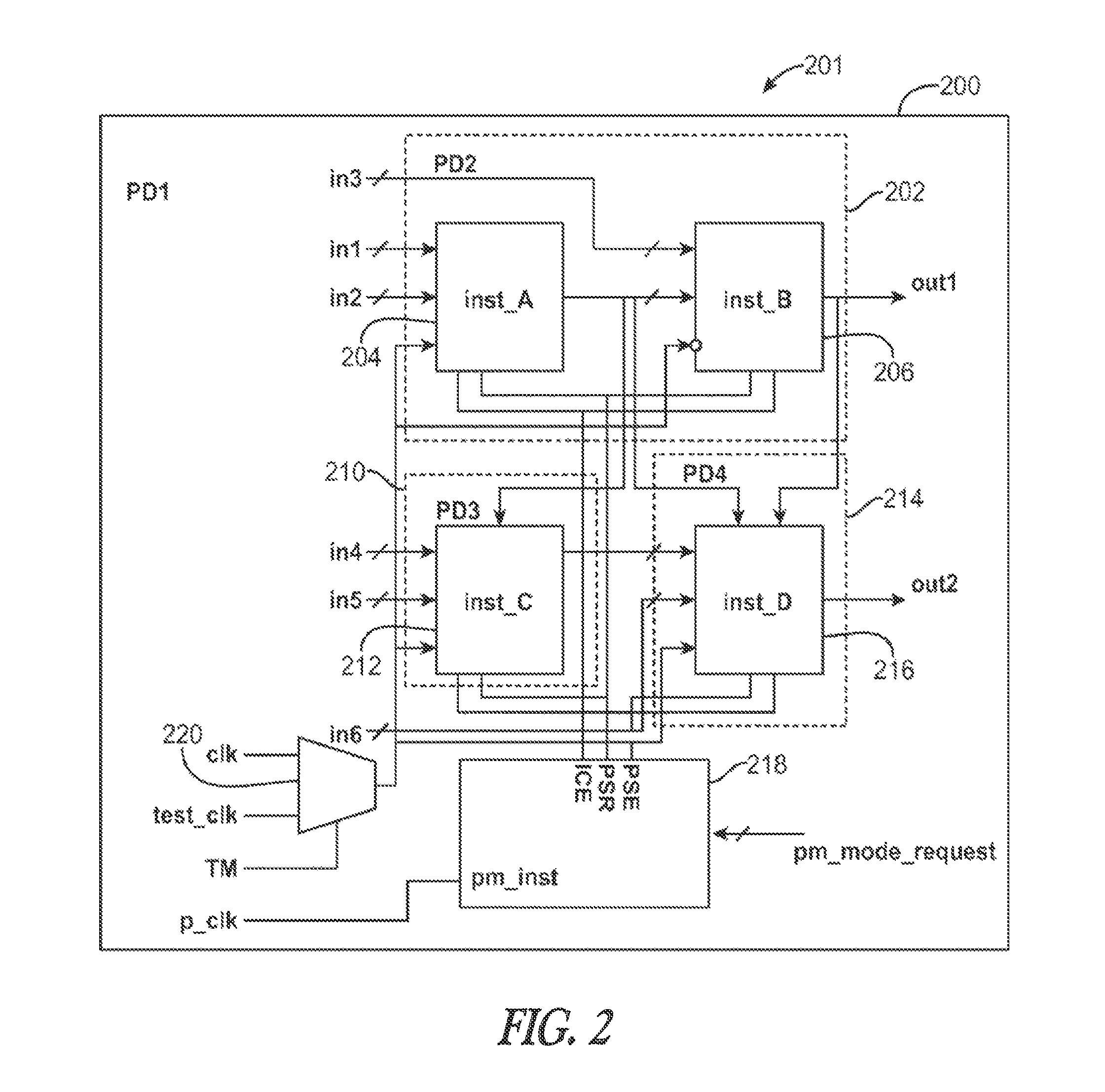Modeling power management for an integrated circuit
a power management and integrated circuit technology, applied in the field of integrated circuit power management design, can solve the problems of not being able to capture the intended behavior in the rtl of the design, not being able to implement certain power management techniques at the physical level after circuit synthesis, and unable to meet the requirements of design verification
- Summary
- Abstract
- Description
- Claims
- Application Information
AI Technical Summary
Benefits of technology
Problems solved by technology
Method used
Image
Examples
Embodiment Construction
[0036]An embodiment of the present invention is shown in FIG. 1. A method 102 for modeling power management in an integrated circuit (IC) includes: specifying a circuit design and a power architecture for the IC 104, where the power architecture includes multiple power domains for specifying power levels in different portions of the IC; determining a testbench for simulating the IC and a verification plan for evaluating simulation results 106; using the testbench to simulate variations in power levels of the power domains of the IC 108; and using the verification plan to evaluate the simulation results for the power domains of the IC 110. Additional exemplary details for each step are provided below.
[0037]FIGS. 2-4 show details related to specifying a circuit design and power architecture for the IC 104. FIG. 2 shows an exemplary IC 201 with power domains PD1200, PD2202, PD3210, and PD4214, where PD1 is a system-level power domain that includes PD2, PD3, and PD4 and additional syste...
PUM
 Login to View More
Login to View More Abstract
Description
Claims
Application Information
 Login to View More
Login to View More - R&D
- Intellectual Property
- Life Sciences
- Materials
- Tech Scout
- Unparalleled Data Quality
- Higher Quality Content
- 60% Fewer Hallucinations
Browse by: Latest US Patents, China's latest patents, Technical Efficacy Thesaurus, Application Domain, Technology Topic, Popular Technical Reports.
© 2025 PatSnap. All rights reserved.Legal|Privacy policy|Modern Slavery Act Transparency Statement|Sitemap|About US| Contact US: help@patsnap.com



